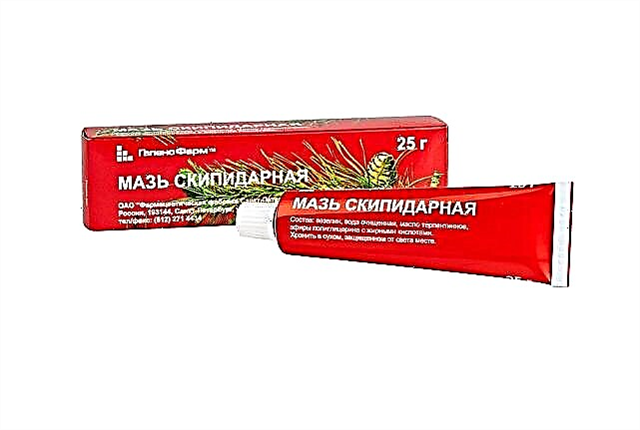
The presence of any peculiarities of the course of pregnancy requires a more attentive approach to the pregnant woman and the baby who is in her womb. A pathology that can significantly complicate pregnancy is a hematoma localized in the uterus. This article describes in detail the causes and treatment of this pathology during early pregnancy.

What it is?
Doctors call a hematoma an accumulation of blood. With a hematoma in the uterus, blood accumulates inside the genital organ. There are many reasons that can lead to this pathological condition.
Hematomas can be different. It depends on where exactly the blood is being poured. Retrochorial hematoma is an accumulation of blood in the space between the uterine wall itself and the chorion (the extraembryonic membrane that separates the tissues of the embryo from the wall of the uterus).
Retrochorial hematoma is an extremely unfavorable pathology. The risk of developing a spontaneous miscarriage with this pathology is quite high. It is very important that such a hematoma is identified in a timely manner.

The formation of such a hematoma occurs in early pregnancy. This is due to the fact that the chorion is a temporary organ. It is present in the body of a pregnant woman for only a few weeks, and later it is transformed into placental tissue.
Causes
A variety of reasons can lead to the development of retrochorial hematoma. Most often, the development of pathology is facilitated by:
- dyshormonal disorders;
- traumatic injury;
- various infections;
- autoimmune diseases;
- pathologies occurring with impaired hemostasis;
- congenital pathologies associated with anatomical defects in the structure of the uterus;
- bad habits of the mother (drinking alcohol, smoking);
- work in harsh conditions associated with high temperatures, noise, radiation, vibration;
- concomitant diseases of internal organs.
The reasons that can lead to the development of retrochorial hematoma in the uterus are so numerous that sometimes it is quite difficult for doctors to establish only one of them. Quite often, the development of this pathology is preceded by the impact of several causes at once.
In women who have a burdened obstetric and gynecological history, the risk of retrochorial hematoma in early pregnancy is quite high. If the expectant mother before pregnancy underwent any operation or surgical intervention on the uterus (scraping, removal of polyps), then during the first weeks of bearing the baby, she may develop retrochorial hematoma.
In cases where it is impossible to establish a single cause, doctors resort to prescribing symptomatic therapy. It is aimed at correcting the developed adverse symptoms. Such treatment should reduce the risk of developing dangerous complications, which are not uncommon in the case of retrochorial hematoma.

How does it manifest?
The severity of adverse symptoms with a hematoma in the uterus depends on its size. Usually, a large hematoma leads to the appearance of pronounced clinical signs in the expectant mother. Some symptoms can be so severe that they can significantly worsen the general condition of a pregnant woman. If the hematoma in the uterus is small, then the symptoms may be mild.
One of the characteristic symptoms that can develop with this pathology is the appearance of discharge from the genital tract. They are usually brownish in color. If an intrauterine hematoma leads to the development of bleeding, then the discharge changes color and turns red.
A woman with retrochorial hematoma may also develop lower abdominal pain. Pain usually worsens after doing any physical exercise or walking quickly. Lifting heavy objects can also increase pain. The epicenter of the pain syndrome in this pathology is usually located in the lower abdomen. However, in some cases, pain can spread to the lumbar region or even "descend" to the thighs. Such irradiation (spread) of pain is largely due to the peculiarities of the innervation of this part of the body.


A woman who has a subchorial hematoma in the uterus in the early stages of pregnancy, may feel general weakness and tire quickly... Fatigue can appear even when doing normal and routine activities. Some women may feel dizzy. A mother-to-be who has a hematoma in the uterus in the early stages of pregnancy should carefully monitor her blood pressure.
If, against the background of the existing pathology, it began to constantly decrease, you should definitely warn your doctor about this. This may indicate the progression of hematoma formation. In this case, a review of the chosen therapy tactics and the appointment of additional drugs are required.
In obstetric practice, asymptomatic cases are also encountered. In this situation, a pregnant woman, as a rule, is not worried about anything. She's doing pretty well. An asymptomatic variant of hematomas is revealed in such situations, as a rule, only during an ultrasound examination. Reviews of many women who have this pathology during pregnancy also confirm this.

Effects
In the early stages of pregnancy, the chorion performs quite a variety of functions. A small developing organism needs this special shell that protects it from the effects of many external factors. A hematoma that appears in the uterus leads to a malfunction of the chorion. This effect is reflected in the general course of intrauterine development of the fetus.
Many pregnant women are interested in the question of whether the hematoma can resolve on its own. If it is small, then in this case it may disappear. Usually the hematoma resolves in 2-4 weeks. In some cases, it may take longer. The prognosis of the course of pregnancy after the "disappearance" of the hematoma in the uterus, as a rule, is favorable. In this case, the expectant mother can carry the child in the womb until the very birth.
A hematoma of the ovum can be a very dangerous pathology. It threatens to disrupt the blood supply of an actively developing small organism. The lack of essential nutrients and oxygen contributes to the fact that the small embryo begins to develop poorly. Ultimately, this can contribute to the development of defects, developmental anomalies.

Another possible complication that can develop with uterine hematoma is infection. The blood that accumulates between tissues is an excellent breeding ground for pathogenic microbes. The microorganisms that got there develop quite quickly, which leads to the development of inflammation. The inflammatory process, which begins with such an infection, both worsens the general condition of the expectant mother, and significantly affects the embryo.
Retrochorial hematoma, which is quite large in size, often contributes to the detachment of the embryo from the uterine wall. In this case, pregnancy, unfortunately, ends in spontaneous miscarriage. At the same time, the embryo "leaves" the uterus along with the blood that appears during the development of bleeding during detachment.
A spontaneous miscarriage can be very dangerous for the condition of the woman herself. It so happens that the bleeding that develops after the death of the embryo and its exit from the uterine cavity is quite abundant.

Severe blood loss can even lead to the development of hemorrhagic shock. In this condition, the woman's blood pressure drops sharply and consciousness is impaired. In such a situation, it is very important to seek immediate medical attention. With severe bleeding, a woman must be hospitalized in a hospital (for intensive care).
Treatment
The main goal of therapy is to stop the growth of hematoma. In this case, all prescribed medications should lead to compensation for the violations that have arisen and the maximum preservation of pregnancy.
For the expectant mother, recommendations are also made for adjusting the daily routine. They, as a rule, exclude intense physical activity, heavy lifting.

At the same time, it is recommended that the expectant mother get enough sleep, eat well and not abuse bath or sauna visits.
Drug therapy
The selection of drugs for uterine hematoma is carried out strictly individually. For this, the doctor must determine the cause that led to the development of these disorders. Medicines can also be prescribed to correct any symptoms that arise.

Hormonal drugs
To correct the violations that have arisen, doctors often resort to prescribing medicines that contain analogues of female sex hormones. They are usually prescribed for a fairly long period of time. Prescribing such drugs is largely justified even with a high risk of the threat of spontaneous miscarriage. Often, doctors prescribe hormones to their patients up to 14-16 weeks of pregnancy.
To normalize the level of the main pregnancy hormone, synthetic analogs of progesterone are most often used. They help to improve the hormonal balance in the body, and also contribute to the prolongation of pregnancy until the second trimester. By this time, the placenta appears in the body of a pregnant woman, which normally synthesizes progesterone.
If the placental tissue performs its functions well enough, then the need for taking synthetic progesterone drugs practically disappears. In this case, you can stop taking hormonal drugs.


Often, to correct the violations that have arisen, doctors prescribe the hormonal drug "Utrozhestan" to expectant mothers. The active ingredient of this agent is progesterone, which is an important pregnancy hormone. When administered orally, the drug is quite well absorbed from the gastrointestinal tract. The medicine is prescribed by an obstetrician-gynecologist who monitors the course of pregnancy.

Antispasmodics
To relieve severe pain in the abdomen, doctors resort to the appointment of antispasmodics. It is important to note that these drugs are administered with extreme caution. In some cases, taking antispasmodics can lead to bleeding. Only a doctor should prescribe antispasmodic drugs. Such funds are prescribed in short courses, on average, for 4-5 days.
During treatment with antispasmodics, a pregnant woman may experience bloody or dark-colored discharge from the genital tract. So part of the blood that is there is removed from the uterine cavity.


Antispasmodics relieve spasm of blood vessels, which leads to the appearance of such specific secretions. When some of the blood comes out of the uterine cavity, the expectant mother can feel much better.
Folic acid preparations
In the early stages of pregnancy, such drugs have a positive effect on DNA synthesis, which actively occurs in the cells of the rapidly developing organism of the embryo. With insufficient intake of folic acid at an early stage of organogenesis, a child may develop various pathologies and even defects in the structure of internal organs.

Retrochorial hematoma, which appeared in the uterus in early pregnancy, is accompanied by fetal dysfunction. In this case, the risk of developing dangerous pathologies increases many times. In this case, cell damage can be minimized with the help of preparations containing folic acid.
Sedatives
For this pathology, these funds are of more auxiliary value. Many women, after determining the diagnosis, begin to worry a lot about the further course of pregnancy. Such stress is dangerous not only for the pregnant woman herself, but also for the baby in her belly. To normalize health, doctors recommend that expectant mothers walk more in the fresh air, master various breathing practices, do what they love (be distracted in every possible way). However, unfortunately, these recommendations do not always help in practice.
In some cases, a woman cannot be distracted and constantly thinks about the problem that has arisen. In this situation, doctors are usually forced to resort to the appointment of sedatives. These drugs have a calming effect on the nervous system, reducing general anxiety. During pregnancy, herbal remedies are usually prescribed that do not harm the fetus.

The choice depends on the specific situation. In this case, the presence of allergies to certain plant components must be taken into account. Very popular drugs that are used for sedation (sedation) are those containing valerian and motherwort. Typically, these herbal preparations are prescribed for several weeks.
Hospitalization in a hospital
In some cases, a hematoma that is in the uterus is treated in a hospital. A pregnant woman is in the hospital until her health returns to normal and adverse symptoms are eliminated.
It can be quite difficult to treat retrochorial hematoma. Even against the background of ongoing therapy, a pregnant woman may develop complications, one of which is the appearance of bleeding. In this situation, timely assistance from qualified doctors is very important.
After inpatient treatment, the expectant mother is discharged home. In the future, she will be treated on an outpatient basis.

In case of any deterioration in well-being, a pregnant woman should immediately seek medical attention. You should not endure and hope that all adverse symptoms will disappear on their own. A hematoma in the uterus can be an extremely dangerous pathology.
It is possible to assess the dynamics of this pathology using ultrasound. For this, the specialist determines whether the size of the hematoma changes with each examination. If (despite the treatment) the hematoma continues to increase, you should definitely consult with an obstetrician-gynecologist about this. With such negative dynamics, a change in the chosen tactics of pregnancy management is required, and in some cases - additional prescription of drugs.

For information on how to behave in the event of this and other causes that threaten pregnancy, see below.



